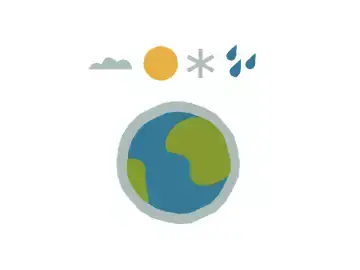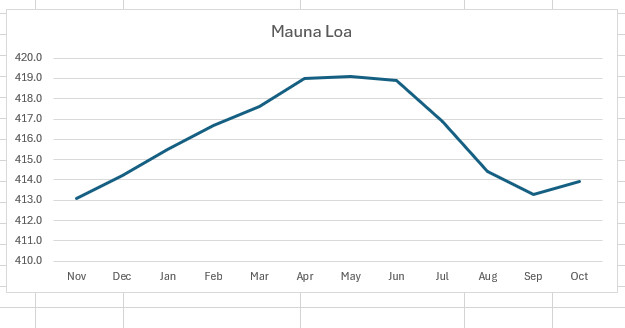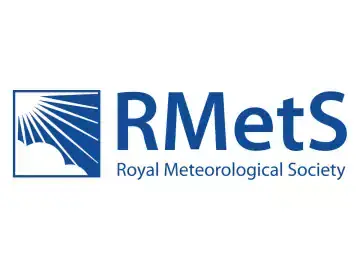
Carbon dioxide - seasonal cycles
This is an exam style question suitable for GCSE chemistry. It makes use of real data sets showing carbon dioxide concentrations at Mauna Loa, a volcano on the island of Hawai'i in the Northern Hemisphere. There is a downloadable question sheet and teacher guidance.
©The Royal Meteorological Society. All rights reserved.

Preparation
What you need
- copies of "RMetS carbon dioxide exam question"
- this visualisation of what 420ppmv looks like
- these data sources: South Pole Data Set; NOAA GML Data Set; Climate NASA Carbon Dioxide Data Set
Location
Indoors
Resources
Step by step
- Download the RMetS seasonal change exam question from the resources section.
- Read the notes for teachers information below.
- Share the exam question with learners.
Notes for teachers
The units for the data are in fact ppmv which we have simplified to ‘parts per million’ for this question.
This is a nice visualisation of what 420ppmv looks like.
The questions explore the fact that there is a seasonal cycle in carbon dioxide in the atmosphere because plants take up carbon dioxide during photosynthesis in the spring and summer, which is then released back into the atmosphere when plants die and leaves rot in the autumn and winter.
Carbon dioxide is a well mixed gas, meaning that the data recorded at Mauna Loa is representative of the Northern Hemisphere, and that at the South Pole is representative of the Southern Hemisphere.
The seasons are out of phase with each other – when it is summer in the Southern Hemisphere, it is winter in the Northern Hemisphere.
As there is far less vegetation in the Southern Hemisphere than in the Northern Hemisphere, the seasonal cycle is much smaller.
Students may notice that there could also be a human element to the cycle – we burn more fossil fuels in the winter than in the summer (and there are also fewer people in the Southern Hemisphere).
The correct answer for the mean is 416.1 parts per million.
As well as the seasonal cycle, the graph provided shows the increase in atmospheric carbon dioxide since 1958. This increase is because of the emissions of carbon dioxide by human activities including land use change including deforestation, burning fossil fuels and cement production.

Curriculum links
Working scientifically
- carrying out and representing mathematical and statistical analysis
- interpreting observations and other data, including identifying patterns and trends, making inferences and drawing conclusions
Earth and atmospheric science
- evidence, and uncertainties in evidence, for additional anthropogenic causes of climate change
Photosynthesis
- the process of photosynthesis
- factors affecting the rate of photosynthesis
What to try next

Earth and Atmospheric Science
Begin activity
What do you want to know about climate change?
Begin activity